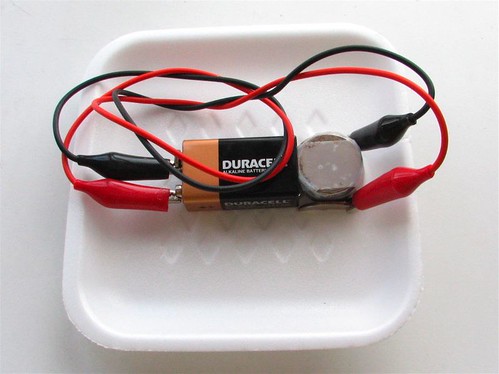 |
| To complete your MHD boat, clip the other ends of the two alligator cables to the two quarters. Go get the Dom, it's time for the maiden voyage. When you float the craft in salt water, the water completes the electric circuit, allowing electricity to flow between the two exposed half-quarters on the bottom side of the tray. As in the case of the simple MHD demonstration, the electric current flows perpendicularly to the magnetic field, so a force is produced, which will push the craft along. Avoid getting salt water in the top of the tray; it will short out the circuit and drain your battery without giving you any propulsion. |
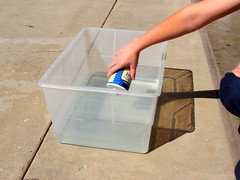 | Get your basin ready and salt the water. We used this clear storage bin to test out our little boat. The water is a couple of inches deep, so that the quarters won't touch bottom. We emptied that container of salt into it, but I'm not convinced that we needed quite that much. |
| Because we're using such a small battery, the total thrust is not very high. To see it, you will need to avoid other factors that can move the boat. Most imporantly, you need to avoid water currents, wind currents, and nearby magnets or ferromagnetic items. We had an early shipwreck with this design when we tried to test it out in our bathtub. It turns out that our bathtub is magnetic. The boat was almost instantly yanked to the bottom. Oops. A more subtle problem is that your craft may slowly float towards the nearest giant chunk of steel, so don't try this right next to your car. Once you eliminate major magnetic interference, you may find that your craft still acts as a weak compass. (If your magnet pointed horizontally instead of vertically, it would make a very good compass.) The compass effect will only mess with your steering, not the thrust direction. If you're careful, you should then be able to tell compass steering from attraction towards metal objects. To check for magnetic interference without eating up batteries, disconnect one of the alligator clips from the battery and set the craft in the basin of water. If it starts drifting (not turning), then you need to put your basin somewhere else. Once you've found an interference-free test site, reconnect your battery. | |
Short movie (43 s, no sound), demonstrating this magnetohydrodynamic propulsion craft (Choose your format):
|
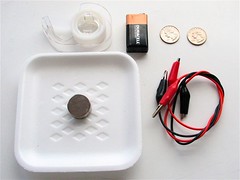
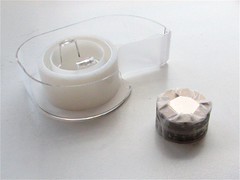
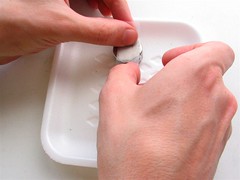
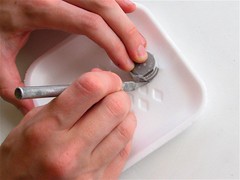
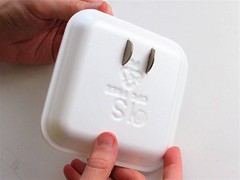
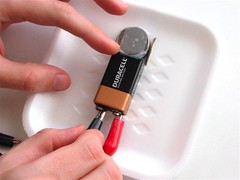
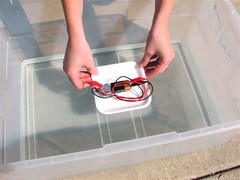
No comments:
Post a Comment